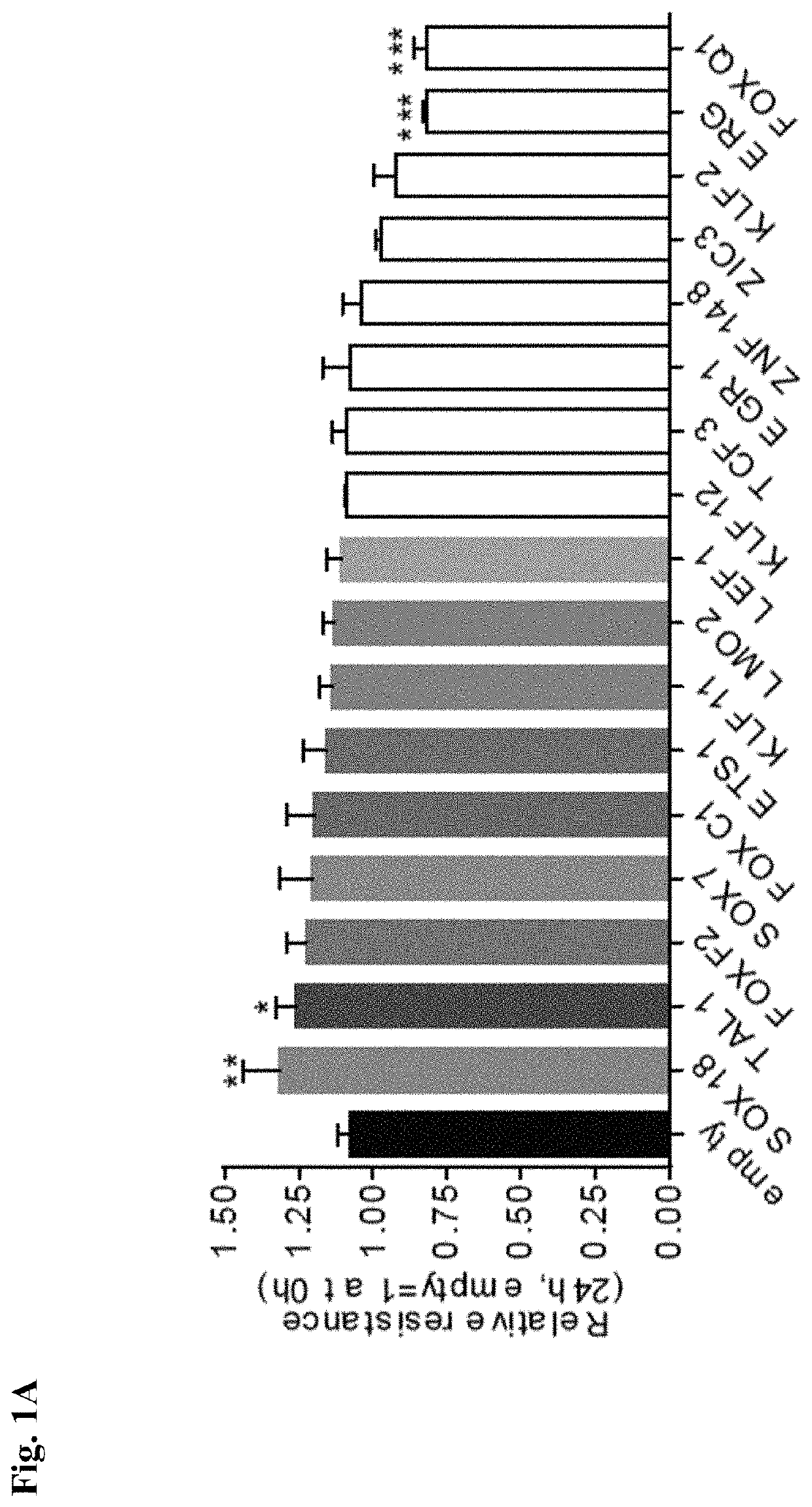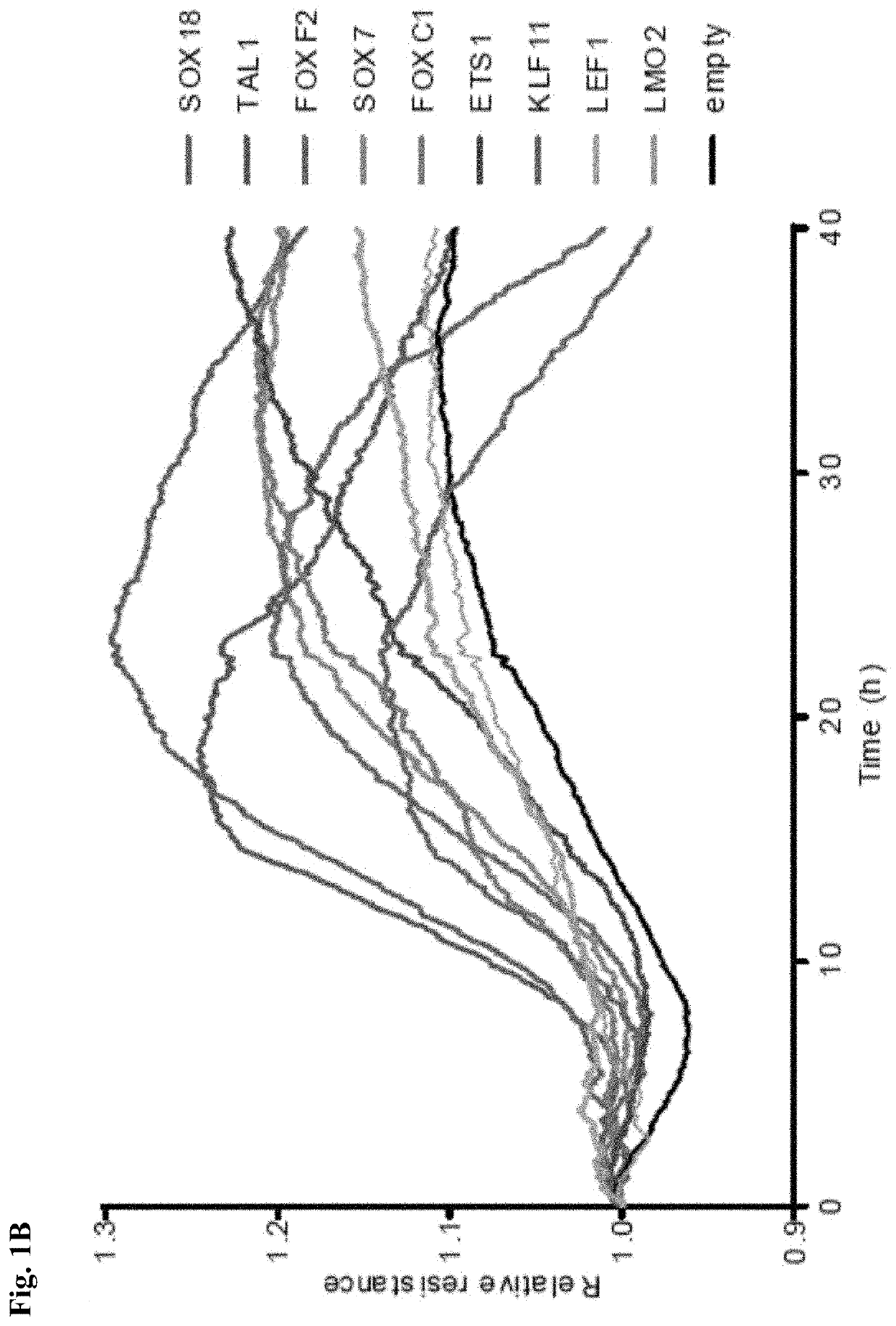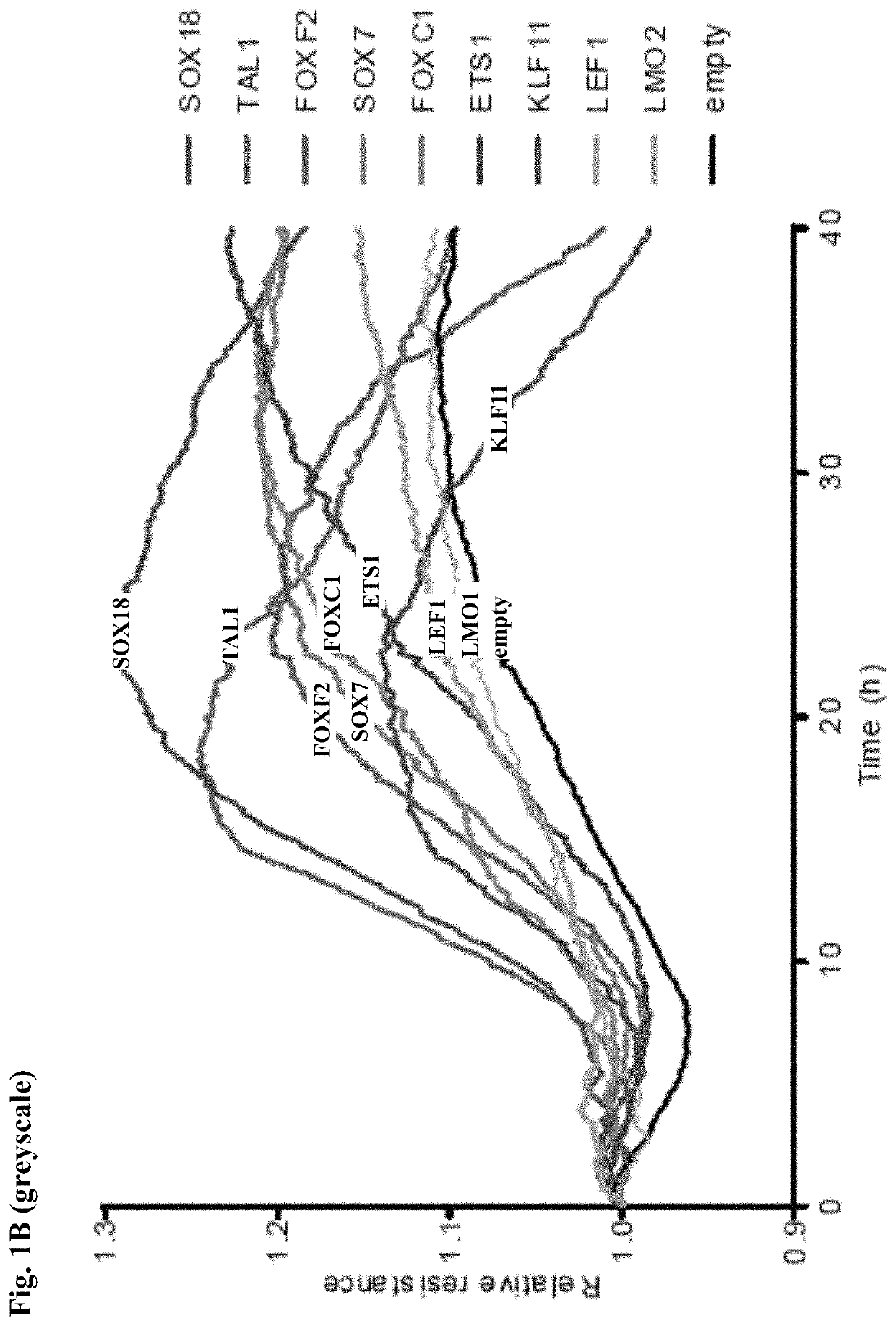Synergistic transcription factors to induce high resistance transendothelial barrier
a transcription factor and high-resistance technology, applied in the field of transcription factors, can solve the problems of difficult to adapt to drug discovery and difficult to accurately reproduce, and achieve the effect of high transendothelial electrical resistance and higher transendothelial electric resistan
- Summary
- Abstract
- Description
- Claims
- Application Information
AI Technical Summary
Benefits of technology
Problems solved by technology
Method used
Image
Examples
example 1
[0185]To identify transcription factors that can differentiate hPSC-ECs to ECs of high transendothelial barrier resistance published expression datasets of the different mouse vascular beds were analyzed (Tam S J, Richmond D L, Kaminker J S, Modrusan Z, Martin-McNulty B, Cao T C, et al. Developmental cell. 2012; 22(2):403-17., Coppiello G, Collantes M, Sirerol-Piquer M S, Vandenwijngaert S, Schoors S, Swinnen M, et al. Circulation. 2015; 131(9):815-26, Nolan D J, Ginsberg M, Israely E, Palikuqi B, Poulos M G, James D, et al. Developmental cell. 2013; 26(2):204-19). Fold change expression in studies between brain ECs and ECs of other vascular beds for all transcription factors (Ravasi T, Suzuki H, Cannistraci C V, Katayama S, Bajic V B, Tan K, et al. Cell. 2010; 140(5):744-52) was calculated. Transcription factors that were highly upregulated (>2 FC) in ECs in brain were identified. Next, gene expression data from a recent single cell expression profiling study from brain ECs (1445 c...
example 2
[0186]As transcription factors work in networks (Neph S, Stergachis A B, Reynolds A, Sandstrom R, Borenstein E, Stamatoyannopoulos J A. Cell. 2012; 150(6):1274-86) we have explored possibility of using lower levels of transcription factors (20 MOI) in a combination with other factors. First we had overexpressed single transcription factors at 20 MOI and evaluated resistance. We could not observe any significant induction after 24 h post stabilization of the resistance (FIG. 2A). In the real time ECIS measurements no significant induction of the barrier resistance was observed, only tendency of SOX18 for barrier induction. In FITC-dextran assay SOX18 caused significant reduction of EC barrier permeability, while TAL1 was found to increase permeability as the effect has been reduced by 48 h (FIG. 2B). Next transcription factors were combined that showed to induce barrier either as single factors (SOX18, TAL1) or were able to induce genes involved in formation of EC barrier (ETS1, LEF1...
PUM
| Property | Measurement | Unit |
|---|---|---|
| frequency | aaaaa | aaaaa |
| diameter | aaaaa | aaaaa |
| electrical resistance | aaaaa | aaaaa |
Abstract
Description
Claims
Application Information
 Login to View More
Login to View More - R&D
- Intellectual Property
- Life Sciences
- Materials
- Tech Scout
- Unparalleled Data Quality
- Higher Quality Content
- 60% Fewer Hallucinations
Browse by: Latest US Patents, China's latest patents, Technical Efficacy Thesaurus, Application Domain, Technology Topic, Popular Technical Reports.
© 2025 PatSnap. All rights reserved.Legal|Privacy policy|Modern Slavery Act Transparency Statement|Sitemap|About US| Contact US: help@patsnap.com



